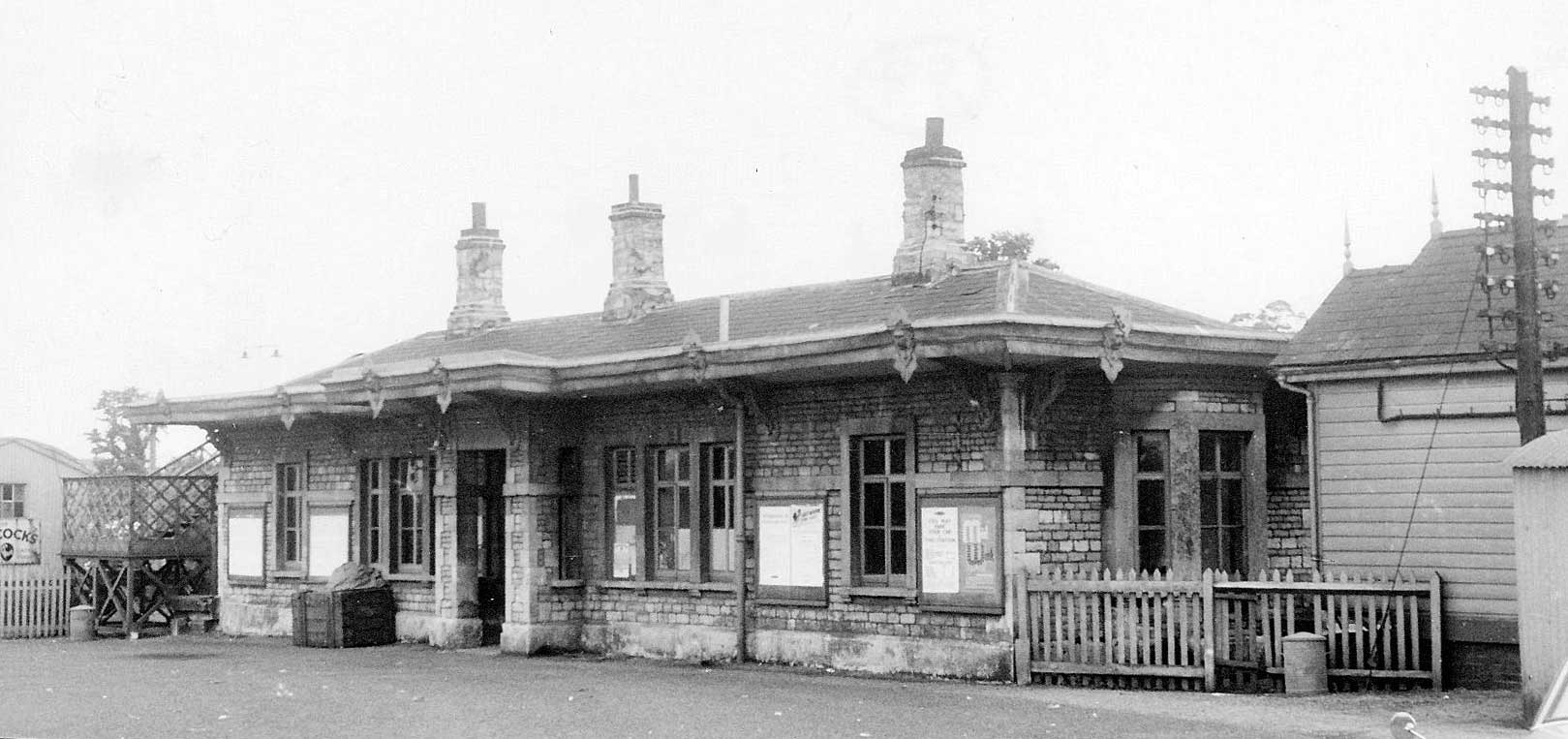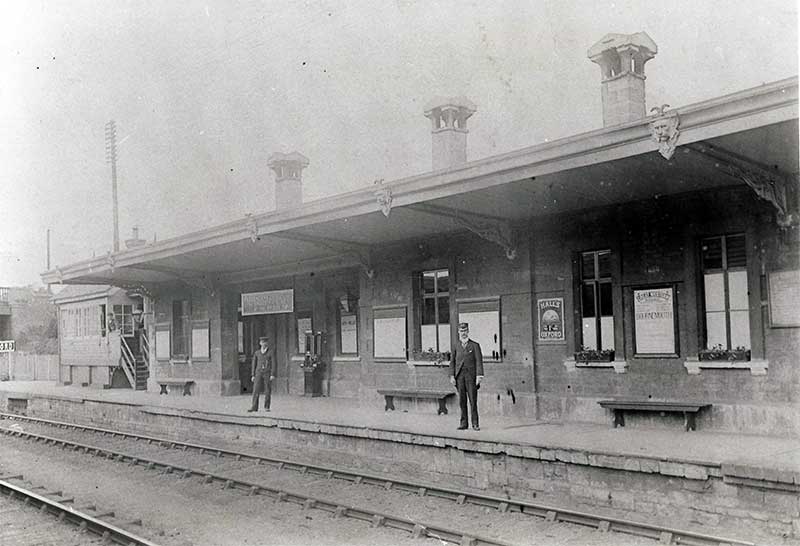History
The original Brunel era station building from Heyford in Oxfordshire is being re-built at Didcot Railway Centre to form the central feature at Oxford Road station, the terminus of the main demonstration line.
Heyford station building is a typical early Great Western Railway design, based on Brunel’s design for the station at Box. These early stations feature a recessed section on the platform side, a substantial booking office porch and a canopy running all around the building. The cast canopy brackets are attractive items of Victorian ironwork and were capped with a lion's head mask filling the depth of the valance. Such buildings featured at Aynho, Kidlington and Heyford and also at Clynderwen in Wales.
Heyford station was opened with the Great Western Railway's Oxford-Banbury line, on 2 September 1850. Substantial stone buildings were completed at Heyford in March 1854 with the main building on the down platform and a smaller one on the up side. Similar buildings were erected at Aynho and Kidlington in the following year or so.

Reproduced from: Brunel: A Railtour of his achievements published by Middleton Press (01730 813169, www.middletonpress.co.uk)
Although the station remains open, British Rail removed the canopy and the building stood derelict for a while in 1978/9 until it was let to a firm of motor parts factors.
However this use was not to last and the building was scheduled for demolition. The building was offered to the Great Western Society and it was agreed that anything we could remove by a given date we could have. The building was dismantled by members of the Society in 1985/6, and materials have been stored adjacent to the main demonstration line at Didcot ever since. We also acquired some parts, most notably the cast-iron canopy brackets, from Kidlington.

The building is now being reconstructed at Oxford Road station on the main demonstration line at Didcot Railway Centre.
Heyford station is 75 miles 21 chains from Paddington.
The station remains open and has been refurbished in recent years, though facilities now provided fall a long way short of those offered by the Great Western Railway. Information about current facilities at the station can be found on the National Rail website.
